Companies across many industries are looking for ways to make their products and manufacturing processes more sustainable in the future. This puts long-established manufacturing processes to the test and also raises questions about intelligent material alternatives. For companies, it is worth taking a look at how materials research is conducted at universities.
By Sofia Wrede
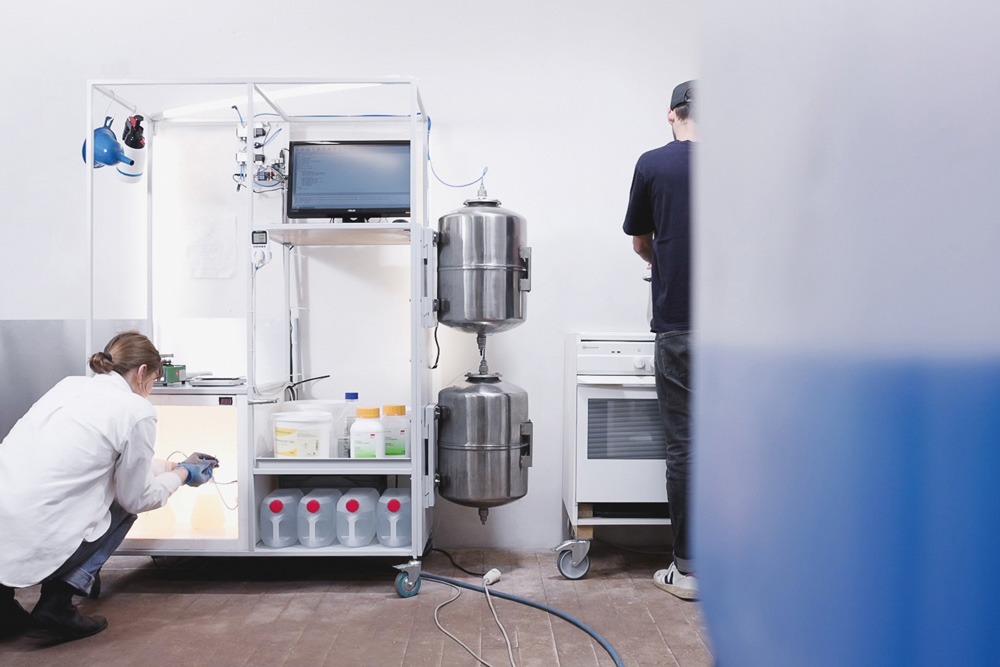
Bauhaus University Weimar: Julia Huhnholz and Friedrich Gerlach were still in the middle of their design studies when they first heard about the material bio-cement. As an alternative to classic cement, it is produced with the help of a bacterium. In the midst of the academic stimulus climate that links success to creativity and the spirit of research, they are immediately fascinated. They exchange ideas with a research group in South Africa and experiment in a small DIY lab to explore the potential of the material. After many phases of experimentation and also challenging intermediate steps, which even require the construction of a machine, they finally succeed: they produce bio-cement themselves. To do this, they mix urea, lime, the bacterium Sporosarcina pasteurii and crushed bricks from a demolished building on their campus.
The bacteria break down urea and convert the calcium into calcium carbonate: this is how the mixture becomes solid. After a few days, the material hardens completely and does not have to be burned CO2-intensively like its counterpart cement.
The students’ focus was on the material and the process of exploring the material properties. The focus was not on the design of a concrete product. It was the freedom in the playful handling of material alternatives, the pleasure and impartiality within the research and development process that created the space and drive for their success.
Why the Design Industry Should Keep an Eye on Universities
Far away from economic production constraints, creative designers can question materials and manufacturing processes more radically than many designers in companies. A think tank of innovation potential that can be relevant far beyond universities. Some companies are already using this synergy in individual projects: Adidas and its partner Parley, for example, cooperated with the Parsons School of Design to design shoes made from ocean plastics.
But overall, there are still too few companies that are open to dynamic processes and innovation impulses through cooperation with external partners, be it for the development of resource-saving product designs or the extraction of alternative raw materials. This is particularly surprising in view of massive shortages of young talent and recruiting challenges at all company levels. The example of Vepa shows how useful such cooperation can be. The Dutch manufacturer of office and contract furniture pursues a consistent development strategy together with its local partners under the roof of the Fair Furniture Group. Here, sustainably processed raw materials are fed into a new product cycle through innovative manufacturing processes. Over the years, Vepa has thus succeeded in building up immense expertise in the production of circular economy furniture and proving it in ever new forms of production. And this year, Vepa also invested in cooperation with students.
Places of Innovation
Hochschule Mainz: Together with its partner Plantics, Vepa started a cooperation here on the occasion of the project “Material als Design-Impuls” under the direction of Professor Bernd Benninghof. Vepa provided the interior design students with specially developed hemp mats and fibres, which the young designers used to develop products. The mats impregnated with bio-resin were the result of a collaboration between Vepa and its long-term partner Plantics. Both the hemp fibres and the resin are purely plant-based, recyclable and have a negative carbon footprint.
In the first step, the students examined the Vepa material in several test procedures for its properties and usage qualities and limits. In the next step, the students designed their own products based on the impregnated hemp mats and fibres in several groups, including a lounger, a room divider and an acoustic panel.
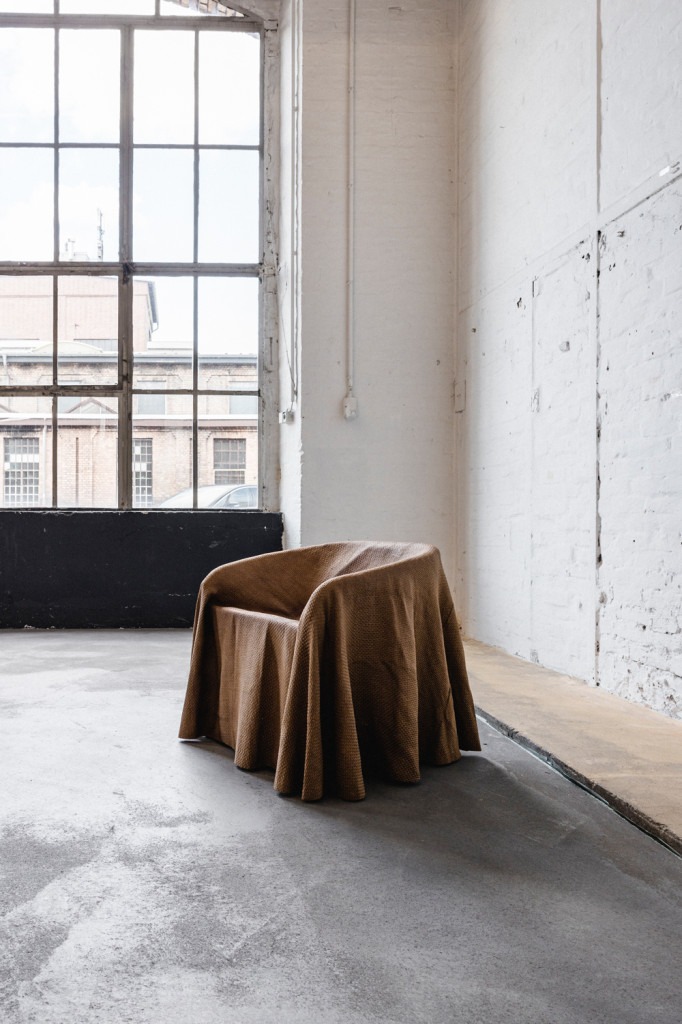
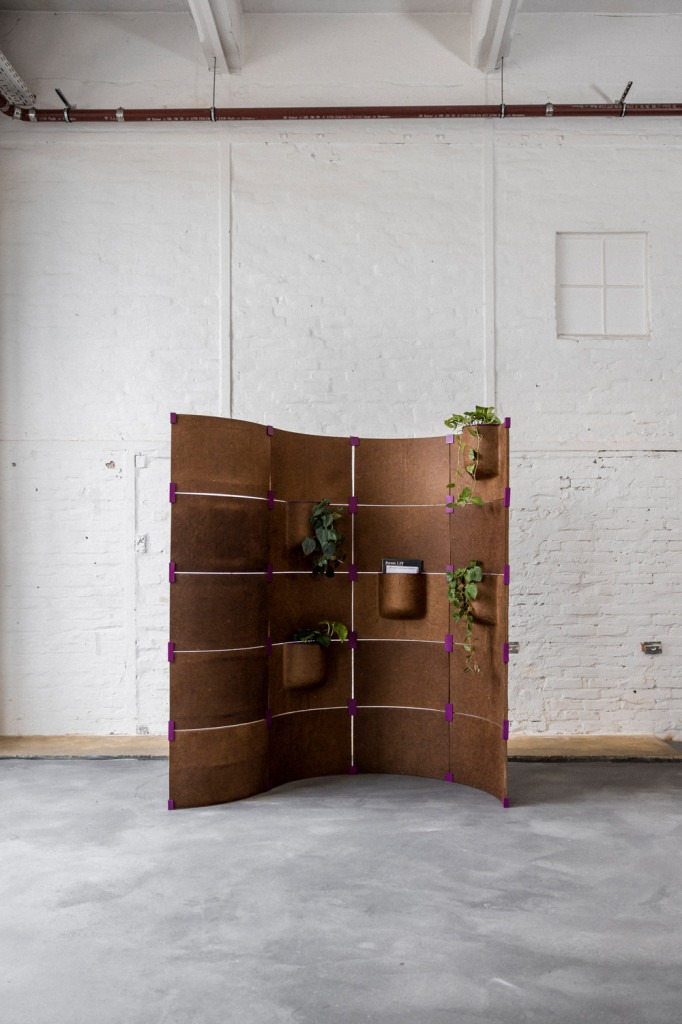
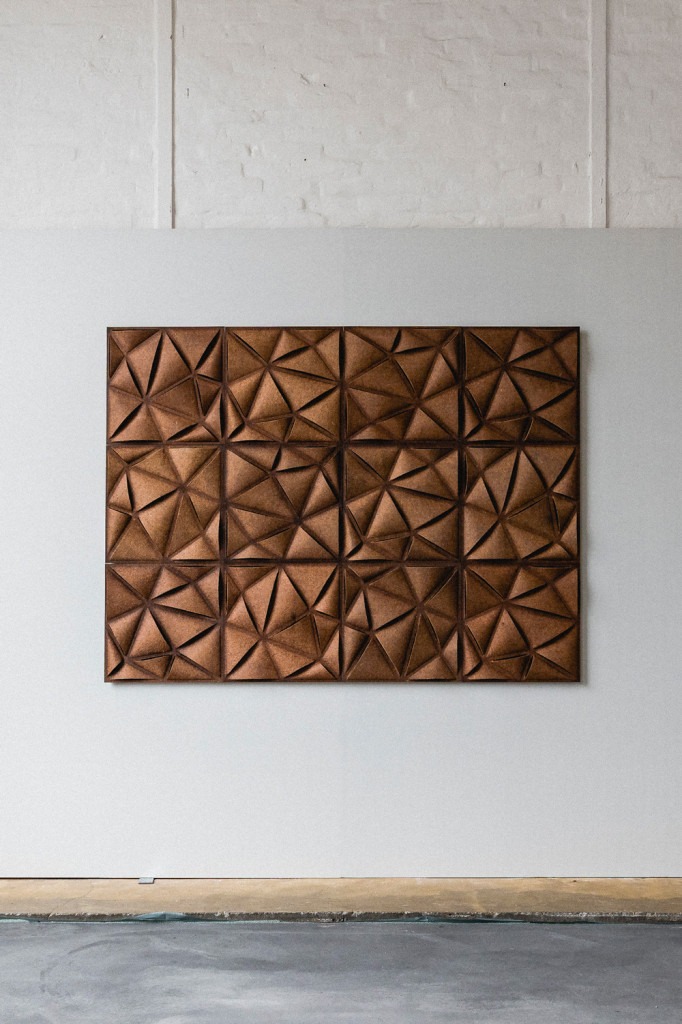
They were inspired by this exciting and unusual task and received a lot of experience and advice in the dialogue with Vepa’s product developers. But the collaboration was also fruitful for the company: currently, Vepa is looking into the possibility of whether individual designs by the students are suitable for further development. Gertjan de Kam, Design and Development Manager at Vepa, is enthusiastic about the cooperation: “Students do not base their work on economic standards. This gave us the opportunity to look at our material in an unbiased way.”
Excellent: Materials Research that Works
Friedrich Gerlach and Julia Huhnholz optimised the manufacturing process for their material biocement. The project “The Essence of Biocement” is a piece of seating furniture that gives bio-cement a special form of expression. For this, they received the “Best of Best” award of the young designers’ competition one&twenty of the German Design Council in April 2023. With the design of the object, they succeeded in making the material comprehensible. The curved shapes of the piece of furniture make it clear how variably bio-cement can be used. Quite intentionally, they leave impressions visible and tangible that were created when the material was cast in specially developed 3D moulds. In this way, they demonstrate a undiscovered material that can develop elementary significance for the furniture and construction industry. It is suitable for table tops, lampshades or wall cladding and much more. In architecture, it could achieve immense sustainability effects: In this industry, the CO2 balance is a burden of incomparably greater magnitude.
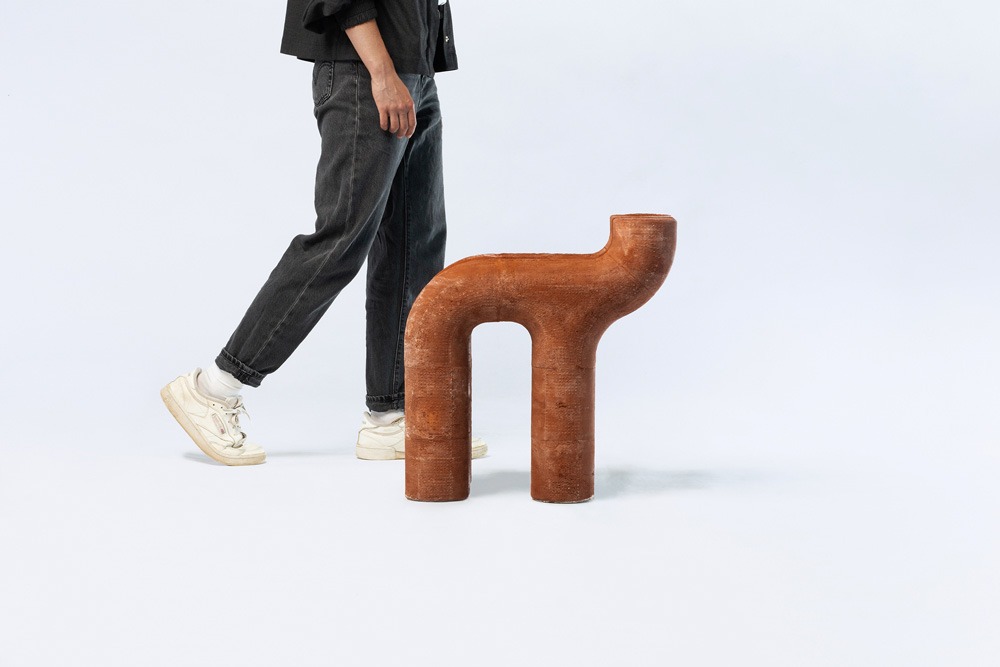
The year 2023 already shows that it is all about the dialogue that needs to be strengthened between young designers, manufacturers and creatives across countries – at events, trade fairs or at the universities themselves. Individual big players like Microsoft and Toyota have long been trying out their own competitions. With their help, they attract students’ attention and generate and collect clever innovative ideas. They show what is needed: courage for new developments, space for creative experiments.

The Essence of Biocement
Julia Huhnholz and Friedrich Gerlach were awarded the “Best of Best” in the 2023 one&twenty competition for young designers for their project “The Essence of Biocement”. The seating furniture they developed consists of 100 percent self-produced biocement. In the course of their design studies at the Bauhaus University Weimar, the award winners looked for more climate-neutral manufacturing processes for their product designs.
Biocement is produced with the help of bacteria that combine recycled bricks with calcium carbonate. Production requires no burning and emits no CO2. Biofabrication and 3D printing enable a new shaping of the material. In the project, the essential properties of biocement were investigated and used to produce a piece of seating furniture. The chair consists of three profiles and was developed to make research more accessible through design.
More on ndion
More articles on the topic of newcomers and universities.
Share this page on social media:

